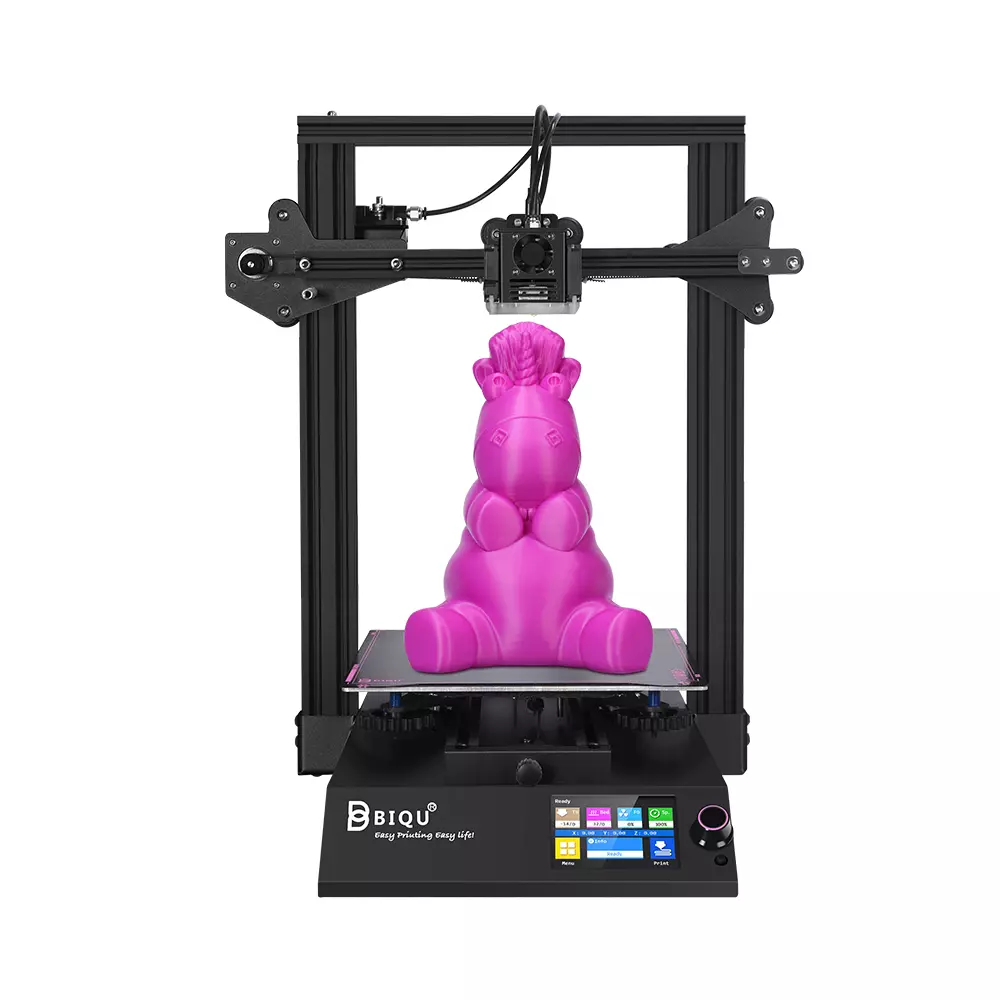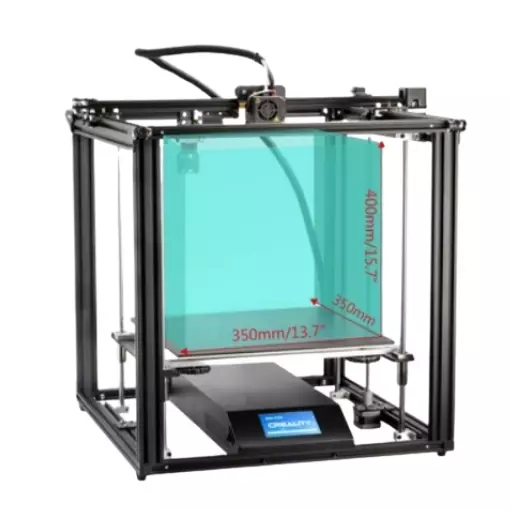Compare BIQU B1 vs Ender 5 Plus
Comparison between the best 3D printers
Choose the best 3D printer at the best price. The cheapest 3D printers are here.
Buy a 3D printer here with 3D Fila.
 |
 |
|
| Model | BIQU B1 |
Ender 5 Plus[BUY Ender 5 Plus] |
| Printing Material | Filament | Filament |
| Buy Filament for BigTreeTech BIQU B1 | Buy Filament forCreality 3D Ender 5 Plus | |
| Estimated price | $269,00 | $599,00 |
| Manufacturer | BigTreeTech | Creality 3D |
| Release Year | 2020 | 2019 |
| Print Volume [mm] | 235x235x270 | 350x350x400 |
| Printer Size [mm] | 412x402x492 | 632x619x666 |
| Weight [kg] | 8,00 | 18,2 |
| Power Loss Recovery | YES | YES |
| Enclosed printer | NO | NO |
| Bed Leveling | Manual | Automatic |
| Filament End Sensor | YES | YES |
| Bed type | Heated | Heated |
| Power supply system | Bowden | Bowden |
| Standard nozzle | 0,4 | 0,4 |
| Maximum Nozzle Temperature [°C] | 250 | 260 |
| Maximum Bed Temperature [°C] | 100 | 100 |
| Maximum printing speed [mm/s] | 100 | 180 |
| Filament holder | YES | YES |
| Camera for supervision | NO | NO |
| Recommended filaments | PLA, TPU, ABS, PETG | PLA, TPU, ABS, PETG |
| Recommended slicers | Cura, Simplify, Slic3r | Cura, Simplify, Slic3r |
| Maximum Resolution [mm] | 0,1 | 0,1 |
| Processor | 32 Bits BTT SKR V 1.4 | 32 bits |
| Display | Touchscreen TFT 3,5'' | Touchscreen TFT 4,3'' |
| Power Supply | 24V / 360W | 24V / 504W |
| Connectivity | SD / USB | SD / USB |
| Operating systems | Windows, Mac, Linux | Windows, Mac, Linux |
| Date of registration in the system | 2021-04-14 | 2021-04-14 |
| Release date | 2020 | 2019 |
| Extra features | The BIQU B1 is an advanced 3D printer with a silent 32-bit BTT SKR V1.4 motherboard and ARM Cortex-M3 CPU, offering DIY interfaces (I2C, SPI, WiFi) and dual Z-axis. Its dual BTT B1 TFT35 V3.0 operating system allows real-time monitoring and multiple printing modes, including G-code visualization effects. It stands out for its BIQU SSS (Super Spring Steel), ensuring easy model adhesion and simplified removal, with the possibility of using it on both sides. It includes a filament sensor, automatically pausing printing in case of filament breakage. The multicolored RGB lights integrated into the hotend allow you to view the printing status even at night. Additional notes include the need for a BIQU-specific Type-C cable and extra interfaces for smart filament sensor and BL Touch. | The Ender 5 Plus offers a large print volume (350x350x400 mm) and fast assembly. It includes a BLTouch sensor, but with range limitations. It stands out for its dimensional accuracy, although it requires adjustments to the slicer settings. Despite the noise, its integrated design saves space, and includes features such as a filament sensor and power resumption. Ideal for large projects, it requires refinement in the settings for high-quality prints. |
| Support for multiple colors and materials (AMS and CFS) | NO | NO |
Notes * |
||
| Cost-benefit | 7 / 10 | 6 / 10 |
| Hardware | 2 / 10 | 2 / 10 |
| Tela | . | . |
| Print volume | 3 / 10 | 4 / 10 |
| Performance | 1 / 10 | 1 / 10 |
| [BUY Ender 5 Plus] |
Conclusion |
| In comparing the BIQU B1 and the Ender 5 Plus, there are distinct strengths and weaknesses to consider, making each printer more suitable for different user needs and priorities. The **BIQU B1** is positioned as a cost-effective option, offering a solid set of features at a lower price point. It boasts a compact design, manual bed leveling, and various innovative technology integrations, like its advanced motherboard and easy model adhesion surface. The printer’s smaller build volume may be a limitation for those seeking to create larger prints, but it compensates with user-friendly attributes such as a filament sensor and good material compatibility. Its performance is respectable for beginners to intermediate users, particularly because it can handle a variety of filaments and offers straightforward setup processes. On the other hand, the **Ender 5 Plus** comes at a higher price, which reflects its larger print volume, more automated features like automatic bed leveling, and a build designed for greater dimensional accuracy. It is better suited for users looking to tackle larger projects or who prioritize high print quality (despite requiring some tuning with slicer settings). However, it is heavier and requires more space, which may not be ideal for all setups. While it includes useful features such as a filament sensor and power recovery, its performance regarding noise levels and motor adjustments may deter some users. In conclusion, if budget is a primary concern and you are looking for a straightforward entry into 3D printing, the **BIQU B1** offers a good balance of functionality and price. However, for those who can justify the higher price for a larger build area and more automated features, the **Ender 5 Plus** presents a more robust option, particularly for larger and more complex projects. Ultimately, the choice depends on specific user needs—whether one values affordability and simplicity or larger capabilities and refinement. |

